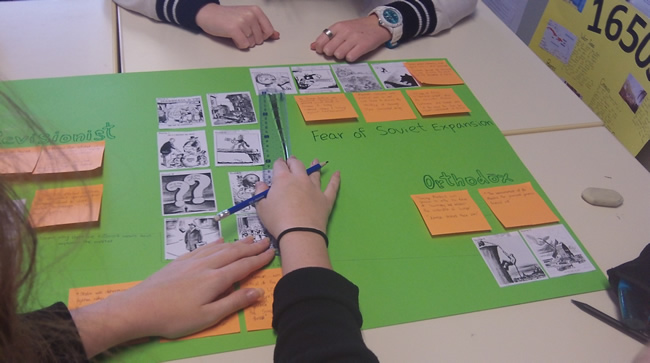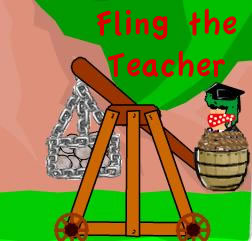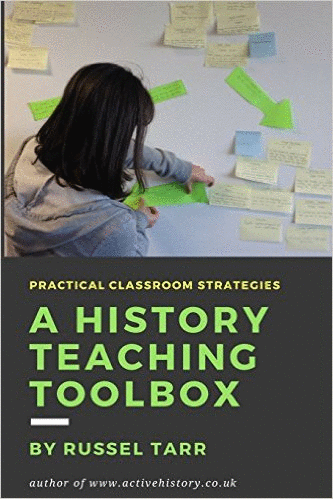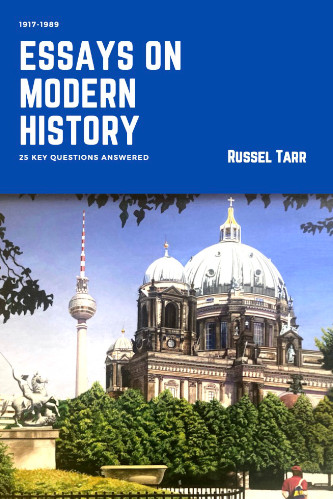World History teaching resources for the high school classroom: lesson plans, worksheets, quizzes and simulation games for KS3, IGCSE, IB and A-Level teachers.

Who was to blame for the Cold War?
Note: Full and comprehensive teaching materials for this topic can be found on the ActiveHistory section for this topic.
From the syllabus
Focus Points
Why did the USA-USSR alliance begin to break down in 1945?
How had the USSR gained control of Eastern Europe by 1948?
How did the USA react to Soviet expansionism?
What were the consequences of the Berlin Blockade?
Who was the more to blame for starting the Cold War, the USA or the USSR?
Specified Content
The origins of the Cold War: the 1945 summit conferences and the breakdown of the USA-USSR alliance in 1945-6; Soviet expansion into Eastern Europe to 1948, and American reactions to it; occupation of Germany and the Berlin Blockade.
Past Questions
| 2016 Nov (region 3) | 2016 Nov (region 2) | 2016 Nov (region 1) | 2016 June (region 3) | 2016 P1 June (region 2) | 2016 P1 June (region 1) | 2015 Sample paper 1 | ||
| Cold War Origins | a [4 marks] | What was the ‘domino effect’ in relation to Vietnam? |
What actions had Stalin taken, by the end of 1945, to extend Soviet power across Eastern Europe? |
What issues were addressed at the Yalta and Potsdam Conferences? |
What were the main agreements reached at the Yalta Conference of February 1945? | What decisions, in relation to Germany, were agreed at Yalta and Potsdam? |
||
| b [6 marks] | Why did Nixon find it difficult to withdraw from Vietnam? |
Why was it difficult to reach agreement over the future of Germany after World War Two? |
Why did Truman develop a strategy of containment? |
Why were the changes which took place between the Yalta and Potsdam Conferences important? |
Why was the Truman Doctrine significant? |
|||
| c [10 marks] | ‘In Vietnam, Kennedy was more successful than Johnson.’ How far do you agree with this statement? Explain your answer. |
‘The USA was responsible for starting the Cold War.’ How far do you agree with this statement? | ‘The Berlin Blockade was a serious threat to world peace.’ How far do you agree with this statement? Explain your answer. | ‘Stalin’s failure to abide by the agreements made at Yalta and Potsdam caused the Cold War.’ How far do you agree with this statement? Explain your answer. |
‘It was the Soviet expansion in Eastern Europe that caused the Cold War.’ How far do you agree with this statement? |
Classroom activities
Cartoon Analysis
Analyse a series of cartoons by hovering over details and answering exam-style questions. When you have finished, the computer will provide you with a printout comparing your answer to a model answer. A great way to revise and develop sourcework skills.
Origins of the Cold War: Collapsible Revision List [Interactive]
A useful "Telescopic Topic" from www.classtools.net
The Yalta Conference: Interactive Computer Simulation!
An artificial intelligence simulation, complete with a worksheet: students choose whether to play as Churchill, Roosevelt or Stalin, and then pit their wits against their opponents to achieve their objectives. This computer lesson runs itself and is a great way of learning about the personalities, issues and results of the Yalta Conference.
Cold War Historiography
"How would each school of historians assess the respective role of military, economic and political factors in causing the Cold War? How would you complete the final columns?"
Interactive Revision Quizzes and Resources
Fling the Teacher Quiz

Ideal for a starter activity. Outline the main task for the day at the beginning of the lesson. Then, give students 10 minutes to play the game. Anyone finishing within the 10 minutes should get points reflecting the amount of minutes left on the clock, then move directly on to the main task for the lesson whilst the rest of the class continue to play.
Repeat this format for ALL your revision lessons to create a "Revision Leaderboard" with a prize given to the overall high score at the end of revision time.
Origins of the Cold War: "Who Am I?" Challenge
Each team will be presented with a clue about a key historical figure. They get 50 points if they guess it correctly. If they wish to 'pass', they get further (easier) clues but the points available steadily decline. An incorrect guess at any point means they get zero points for that round. You can play as many rounds as you wish. It's a great way to revise!
Keyword challenge
Put students into teams of 4 or 5. The first member of the first team sits in the "hotseat" with their back to the interactive whiteboard. The teacher uses the "Random Word Picker" at www.classtools.net to choose and display a word at random on the interactive whiteboard. The rest of the team have 30 seconds to get their teammate to guess what word is on the screen behind them by giving a definition. A correct guess gets points for the team based on how many seconds are left on the clock (e.g. 25 points if they get it after 5 seconds). The teacher should then provide a short outline of the significance of the term, and all students should make a note of it. Repeat for the other teams, and carry on for as many rounds as you like! A prize can be given to the highest-scoring team at the end of the game, and scores can be added to the Revision Leaderboard if you are using one.
IGCSE Revision: Homepage

© 1998-2025 Russel Tarr, ActiveHistory.co.uk Limited (Reg. 6111680)
1 Torrin Drive, Shrewsbury, Shropshire, SY3 6AW, England
Privacy Policy | Contact






